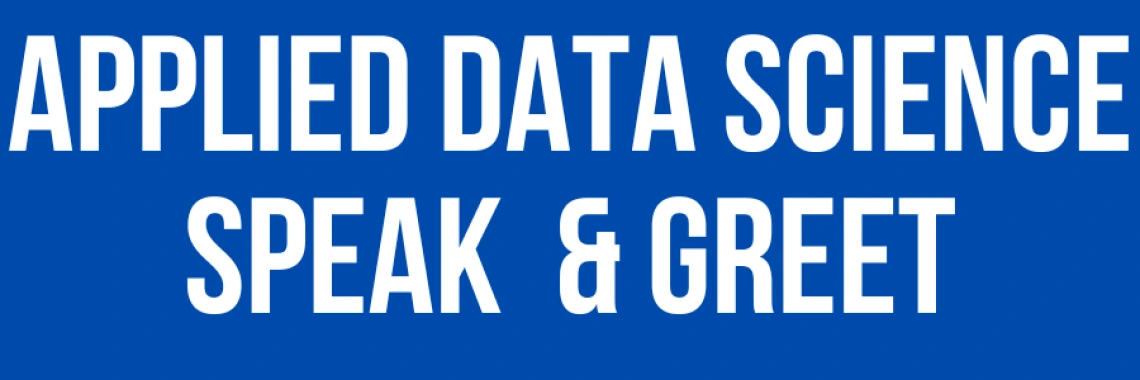Fall 2022 - Applied Data Science Speak & Greet


The Applied Data Science Speak & Greet is hosted by the University of Arizona Data Science Institute. The series helps to foster and promote building a network of researchers and graduate students by giving exposure to different interdisciplinary Data Science applications.
Enrique Noriega was the first speaker in the Applied Data Science Speak & Greet series on September 21, 2022. Noriega, with the UA Computer Science Department, provided an engaging presentation on “Accelerating Research Through Large Scale, Interpretable Machine Reading.” Connections were made between the researchers, graduate students, Noriega, and Nirav Merchant, the Director of the Data Science Institute, during the exciting Q&A session which directly followed Noriega’s presentation in the UA Kiva Room at the Student Union.
Noriega provided an overview of how Natural Language Processing is being used to extract information from full document texts stored in the PubMed repository and other search engines that store biomedical literature. The biomedical repositories and search engines index several million new articles per year. The amount of new publications far exceeds the processing capacity of human domain experts which limits our ability to understand many diseases. As a result, Noriega’s team developed Reach (REading and Assembling Contextual and Holistic mechanisms from text), a system for automated, large-scale machine reading of biomedical papers that can extract mechanistic descriptions of biological processes with relatively high precision at high throughput.

The second successful Applied Data Science Speak & Greet was held on October 19th with Jason Pacheco presenting. Pacheco, with the UA Computer Science Department, discussed "Fast Approximate Inference for Probabilistic Machine Learning in Complex Models" and the use of probabilistic approaches to machine learning, inference, and sequential decision making when observable quantities provide only partial noisy information.
Pacheco described the process of Probabilistic Reasoning to explain a current experiment where a patient had an implanted intracortical brain computer interface (ICBI) and used his thoughts to repeatedly move a white dot on a screen to reach a red dot that also moved in a specific position on the screen. The patient was simulating the motion of a computer pointer. This was an example of a process that mimics a state of prior knowledge of an event and then initiates the execution of a task that will quantify the degree of uncertainties by gathering information in real-time to make inferences about the direction and distance to a specific object in the screen. This was a simple example of the advances in the theory of machine learning models to describe complex phenomena in neurophysiology. The Q&A session was held after Pacheco’s presentation. Again, the audience was fully engaged asking about additional applications including advancements in communicating mentally via a keyboard for patients with full-body paralysis.
The Fall semester wraps up the series with the final speaker on November 16th. Register to hear Andrew Bennett, with the UA Department of Hydrology and Atmospheric Sciences and research in hydrologic modeling and machine learning. His presentation for the afternoon is "Rapid emulation of a physics-based hydrology simulator with knowledge-guided deep learning models."
The Spring semester line-up of speakers for the Applied Data Science Speak & Greet series will be available soon on the Data Science Institute calendar. Contact Carlos Lizárraga to learn more or if you interested in being a speaker during the Spring semester.

